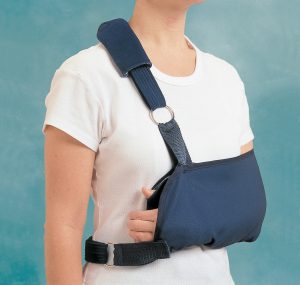What is Frozen Shoulder?
Frozen shoulder, also called adhesive capsulitis, involves stiffness and pain in the shoulder joint. The shoulder joint is enclosed in a capsule of connective tissue. Then, frozen shoulder occurs when this capsule thickens and tightens around the shoulder joint, restricting its movement.
What does a typical case look like?
Often, signs and symptoms begin slowly, and start getting worse. Over a long period of time, symptoms get better, usually within 1 to 3 years. Additionally, having to keep a shoulder still for a long period increases the risk of developing frozen shoulder. For example, this might happen after having surgery or breaking an arm.
Treatment involves range-of-motion exercises. Sometimes, treatment involves corticosteroids and numbing medications injected into the joint. Rarely, arthroscopic surgery is needed to loosen the joint capsule so that it can move more freely.
It’s unusual for this condition r to reoccur in the same shoulder, but some people can develop it in the other shoulder, usually within five years.
What are the stages of a frozen shoulder?
Frozen shoulder typically develops slowly in three stages.
- Freezing stage – Any movement of the shoulder causes pain, and the shoulder’s ability to move becomes limited. This stage lasts from 2 to 9 months.
- Frozen stage – Pain might lessen during this stage. However, the shoulder becomes stiffer and using it becomes more difficult. This stage lasts from 4 to 12 months.
- Thawing stage – The shoulder’s ability to move begins to improve. This stage lasts from 5 to 24 months. For some people, the pain worsens at night, and can disrupt sleep.
Who develops frozen shoulder?
Certain factors may increase the risk of developing frozen shoulder.
1. Age and sex: Firstly, people aged 40 years and older and women
2. Immobility or reduced mobility: Secondly, people who’ve had to keep a shoulder still (i.e in a sling, immobilized). This restricted movement can be the result of many factors, including:
- Rotator cuff injury
- Broken arm
- Stroke
- Recovery from surgery

Periods of immobilization like above increase the risk of developing frozen shoulder. Sling is Rolyan Deluxe Shoulder Immobiliser Sling
3. Systemic diseases: Finally, people who have certain diseases appear more likely to develop frozen shoulder. As an example, this may include:
- Diabetes
- Overactive thyroid (hyperthyroidism)
- Underactive thyroid (hypothyroidism)
- Cardiovascular disease
- Parkinson’s disease
Frozen Shoulder and Physiotherapy
Fortunately, most cases can be managed in the primary care setting. Clinicians are encouraged to start the treatment with patient education. Explaining the natural progression of the condition often helps to reduce frustration and fear.
Common conservative treatments include nonsteroidal anti-inflammatory drugs (NSAIDs), glucocorticoids given orally or as intra-articular injections, and/or physical therapy. Additionally, physical therapy has been shown to bring about pain relief and return of functional motion. Particularly, when used in combination with physical therapy, NSAIDs were proven to be more effective as compared to using NSAIDs alone.
Physiotherapy for each stage of frozen shoulder
Physical therapy and home exercises can be a first-line treatment, with consideration of the patient’s symptoms and stage of the condition.
- Freezing Stage: In the freezing (painful) stage, gentle stretching exercises can be done but should be kept within a short duration (1–5 seconds) and not go beyond the patient’s pain threshold.
- Frozen Stage: In the frozen (adhesive) stage, strengthening exercises can be added to the patient’s exercises for maintenance of muscle strength.
- Thawing Stage: In the thawing stage, the patient experiences a gradual return of range of motion; both stretching and strengthening exercises can increase in intensity, with a longer holding duration.
What do I do if I have shoulder problems?
If you are experiencing any such above symptoms, our team of qualified physiotherapists at PhysioNow are ready to help! We will assist you and guide you through personalized treatment that will help you to improve mobility and quality of life. Book your first appointment with PhysioNow today!





Leave a Reply